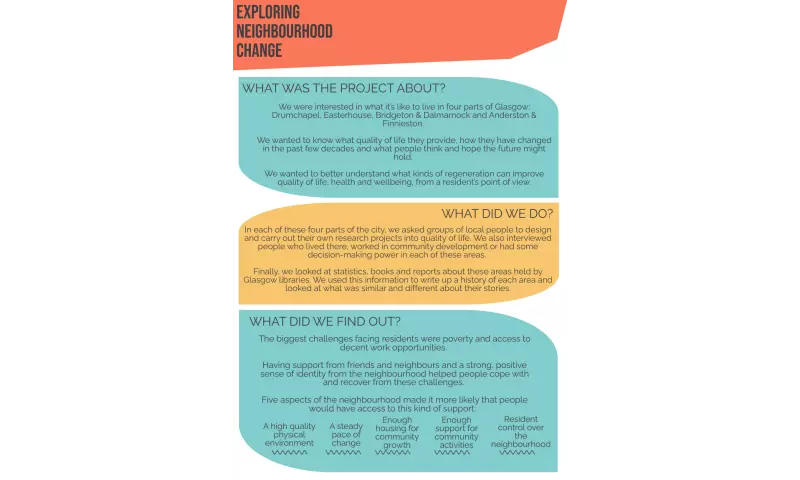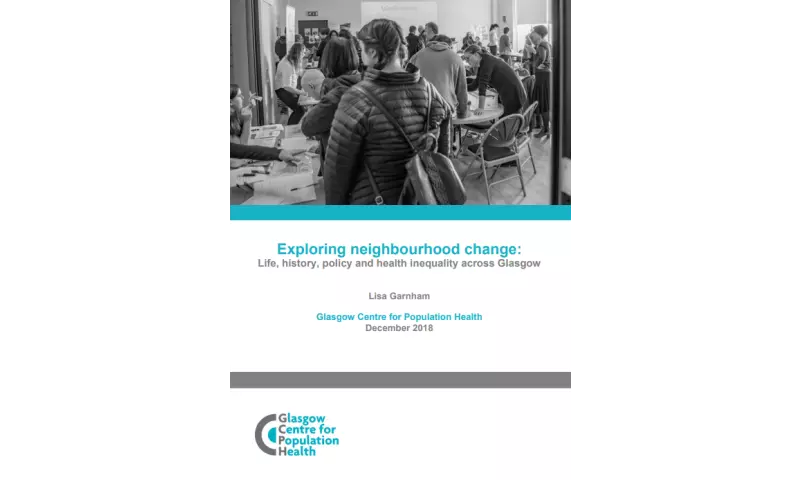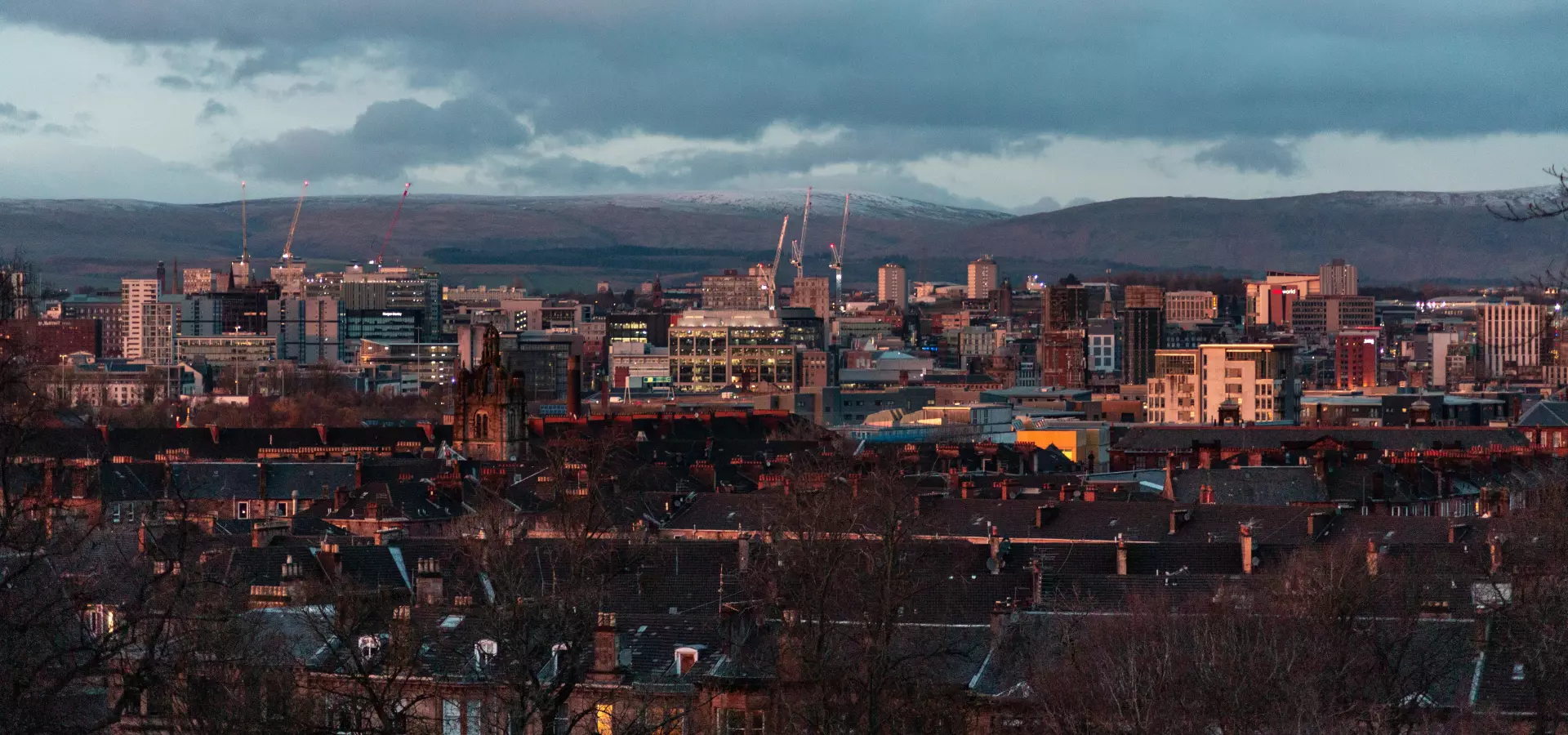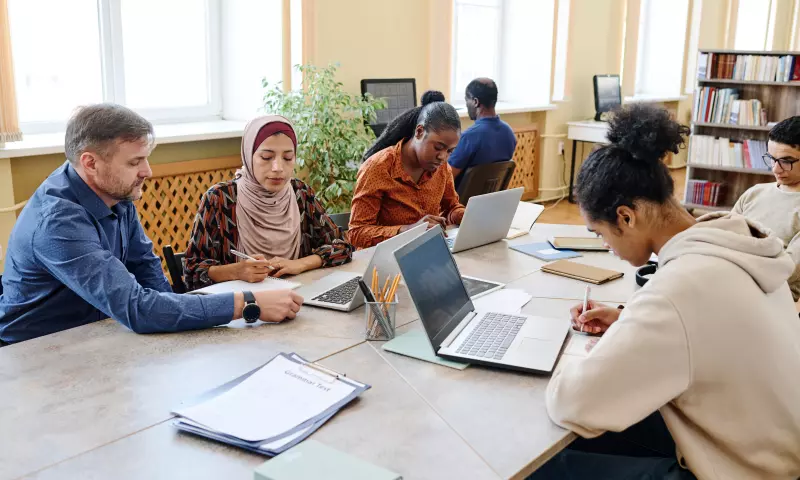Exploring neighbourhood change
Completed Project
Communities
Sep 2015 - Jul 2017
This research project worked with residents in four parts of the city: Easterhouse; Drumchapel; Anderston/Finnieston; and Bridgeton/Dalmarnock. The first two areas are both out-of-town council estates with similar histories but, in recent years, increasingly divergent health outcomes. The second two areas are in the inner city and have been the subject of several regeneration projects in the past 10-15 years, which have affected their populations, housing and built environments.
Through exploring what it is like to live in these areas, and taking account of the social, cultural and economic experience of the city more broadly, this research contributes towards our understanding of why some communities fare better than others in response to social and urban change, and how the health of the inhabitants of some of Glasgow’s poorest neighbourhoods might be improved. This includes providing some insight into how different types of regeneration strategies play-out differently in seemingly similar neighbourhoods.
Key objectives
- To map out the histories of these four parts of the city, including the ways in which their demography, the amenities they provide, and the quality of life they offer has changed over time, particularly in response to regeneration and (re)development activity.
- To explore the reasons why people’s experiences and quality of life in these four parts of the city have been similar or different, converged or diverged, paying particular attention to the social, cultural and political environments there.
- To investigate the resources for and barriers to successful adaptation to the various processes of change experienced in these four areas, particularly in relation to community activism, empowerment, community infrastructure, and influence.
- To build local capacity within these study neighbourhoods to understand and analyse local-level change and to stimulate action. This was achieved by linking with key local organisations and recruiting, training and supporting peer researchers (local people without a background in research) to conduct their own investigations.
Peer research
As part of the peer research aspect of this project, we funded two Activate community development courses, one in Calton and another in Drumchapel. Over 30 people completed these courses and, as part of this, designed, developed and presented their own research projects on issues important to them in their neighbourhoods. These projects were showcased at a workshop in November 2016, after which we discussed what the future of Glasgow should be like and how to get there.
 Project outputs
Project outputs
Publications & Documents
-

Exploring neighbourhood change - infographic
-

Exploring neighbourhood change
-

Exploring neighbourhood change - workshop discussion
News
 Further resources & reading
Further resources & reading
Previous
The Right Here Right Now study
Back to

